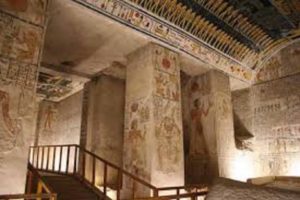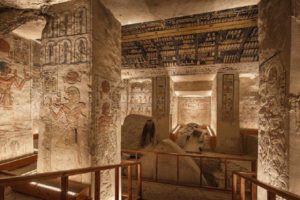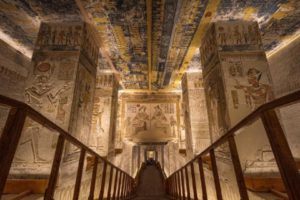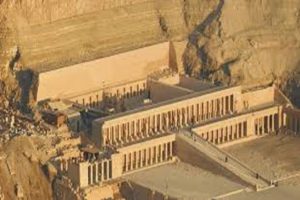



The ancient Egyptians built massive public monuments for their pharaohs. But they also spent time and treasure creating hidden underground mausoleums. The most famed collection of such elaborate tombs—the Valley of the Kings—lies on the Nile’s west bank near Luxor.
During Egypt’s New Kingdom (1539-1075 B.C.), the valley became a royal burial ground for pharaohs such as Tutankhamun, Seti I, and Ramses II, as well as queens, high priests, and other elites of the 18th, 19th, and 20th dynasties.
The tombs evidence elaborate preparations for the next world, in which humans were promised continuing life and pharaohs were expected to become one with the gods. Mummification was used to preserve the body so that the deceased’s eternal soul would be able to reanimate it in the afterlife.
The underground tombs were also well stocked with all the material goods a ruler might need in the next world. Treasures—like the golden masks found with King Tut—are dazzling, but the tombs also contained the more mundane.
Tombs were also well-provisioned with enough food and drink, including wine and beer, for royal feasting in the next world, as well as sacred objects meant to help the deceased achieve eternal life, even favored companions.





